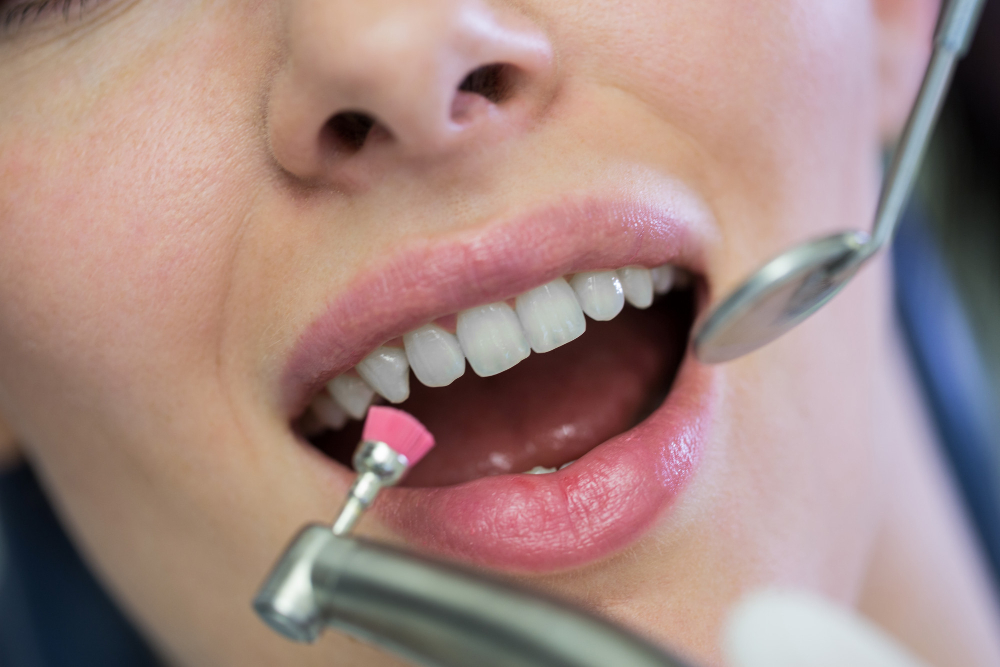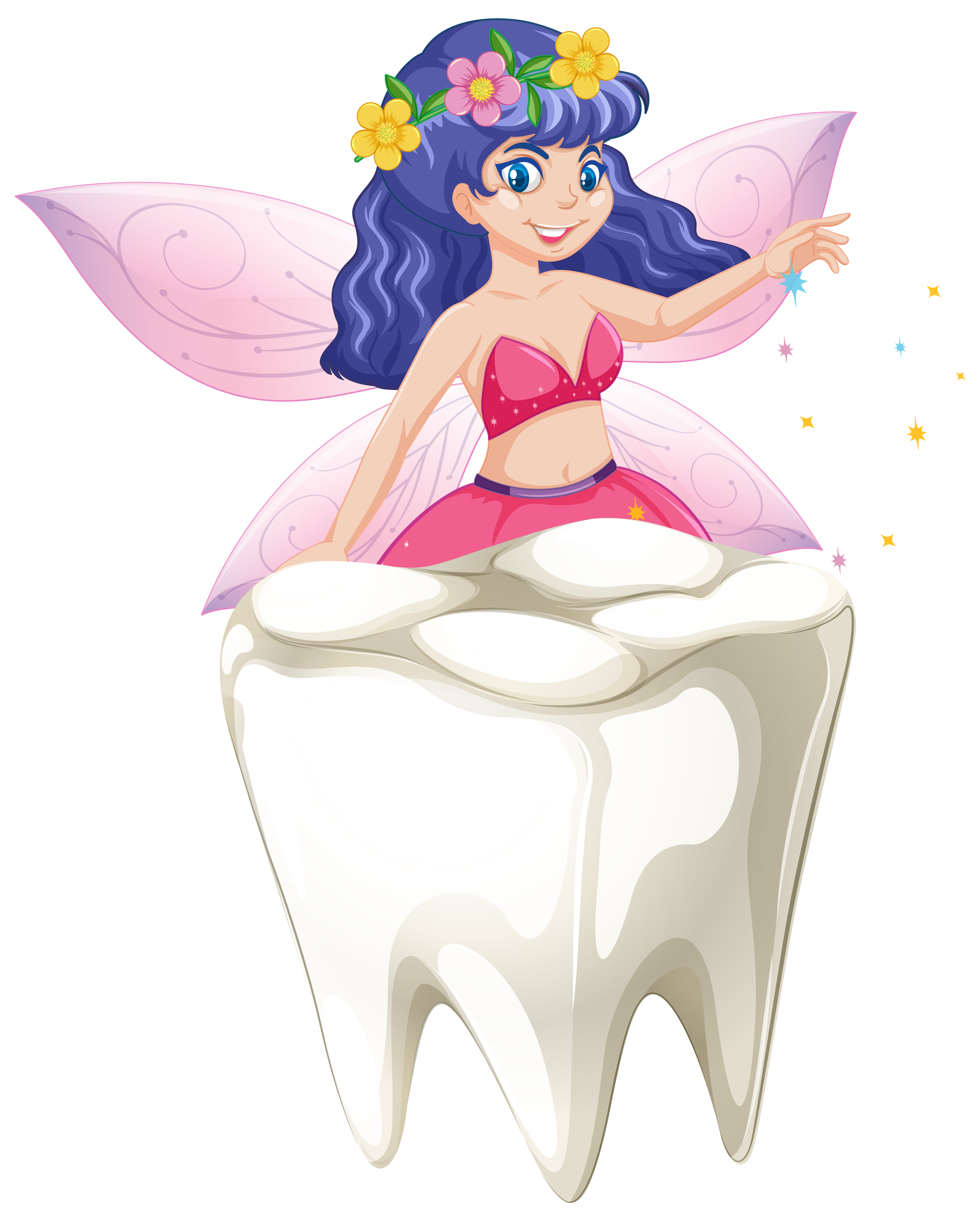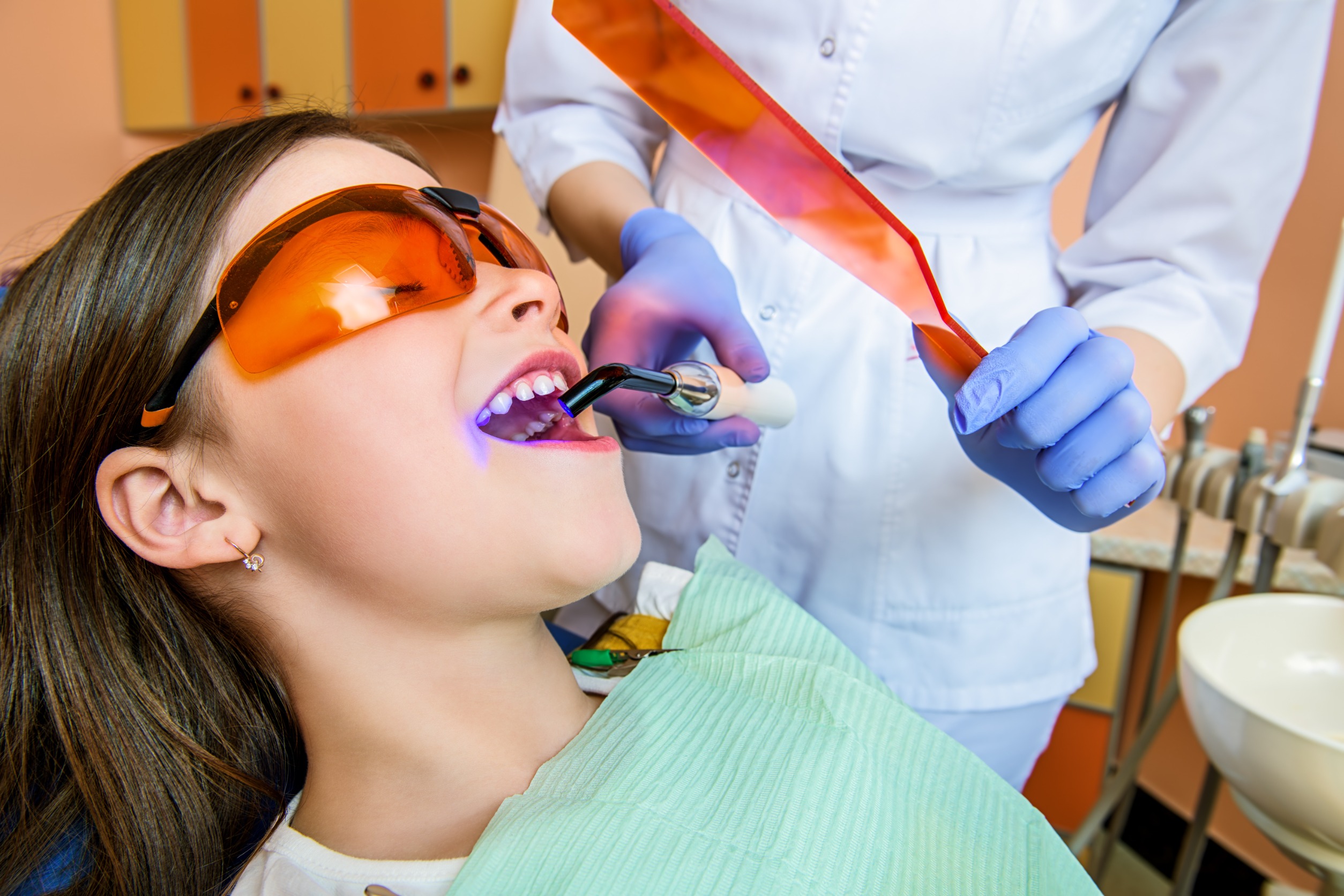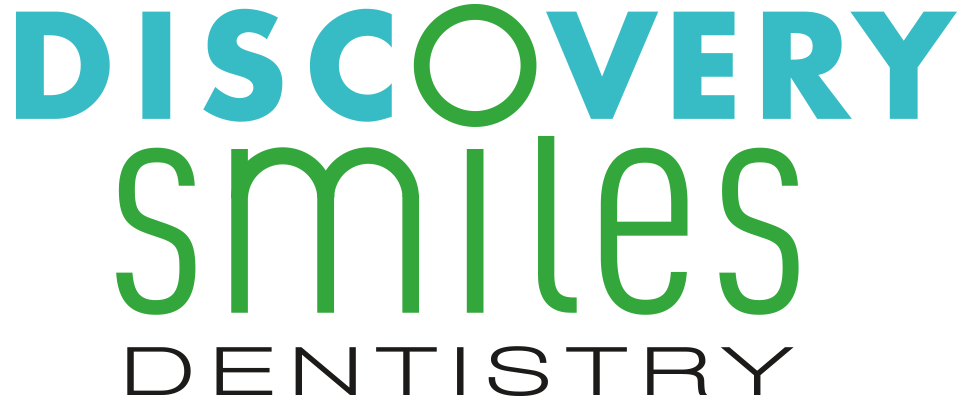
Is it Okay to Chew Sugar-Free Gum?
Posted on Jun 01, 2024
Sugar-free gum is a popular and readily available option for those looking to freshen their breath, enjoy a sweet treat without the sugar, or promote oral health. But the question remains, is it okay to chew sugar-free gum?
The answer is a resounding yes, and here’s why. Sugar-free gum is often sweetened with a sugar substitute called xylitol, a naturally occurring alcohol found in many plant materials. Xylitol has garnered attention for its potential oral health benefits. It’s been shown to help maintain a neutral pH level in the mouth, preventing plaque bacteria from adhering to teeth and causing enamel damage. Furthermore, xylitol can assist in stimulating saliva production, which acts as a natural defense against acidic attacks, and it can help clean the mouth when brushing isn’t immediately possible.
So, when you chew sugar-free gum, you’re not only indulging in a guilt-free, sweet-flavored experience, but you’re also promoting better oral health. However, as with most things, moderation is key. It’s essential to remember that while sugar-free gum is suitable for adults and young children, it’s not recommended for those under the age of seven, as they may not have the necessary motor skills to chew gum safely.
In summary, chewing sugar-free gum sweetened with xylitol can be a simple and enjoyable way to freshen your breath, enjoy a sweet treat without sugar, and potentially enhance your oral health. Just remember to chew responsibly, and you can savor the benefits guilt-free.
Previous Blog Article

How Diets Affect Your Dental Health
Posted on May 01, 2024
Your diet has a significant impact on your dental health. The foods and beverages you consume can either support your oral health or contribute to dental problems. Here are some tips to help you make wise dietary choices.
- Sugar and Tooth Decay: Sugary foods and beverages, such as candies, soda, and sweets, are a leading cause of tooth decay. When you consume sugary items, the bacteria in your mouth feed on the sugar and produce acids that can erode tooth enamel.
- Acidic Foods and Erosion: Acidic foods like citrus fruits and vinegar can weaken tooth enamel over time, leading to dental erosion. While these foods offer nutritional benefits, it’s essential to consume them in moderation and rinse your mouth with water after eating them.
- Carbohydrates: Starchy foods like bread, crackers, and chips contain carbohydrates that break down into simple sugars in the mouth. Bacteria feed on these sugars, producing acids that can harm teeth.
- Calcium and Phosphorus: Calcium and phosphorus are essential minerals for strong teeth. Dairy products, lean meats, and leafy greens are good dietary sources of these minerals. Including them in your diet can help fortify your teeth.
- Hydration and Dry Mouth: Dehydration can lead to dry mouth, a condition that reduces saliva production. Saliva helps neutralize acids and protect your teeth. Drink plenty of water throughout the day to maintain proper hydration and oral health.
- Fiber for Gum Health: Fiber-rich foods like fruits and vegetables can help clean teeth and gums as you chew. They also stimulate saliva production and contribute to gum health.
- Chewing Gum and Dental Health: Sugar-free chewing gum, particularly gum containing xylitol, can stimulate saliva production and help clean the mouth.
Conscious and conscientious dietary choices can significantly improve and maintain your oral health. Your smile deserves an encore so tailor your diet to keep the show going.
Previous Blog Article

What Are Some Fun Ways to Encourage My Kids to Brush and Floss?
Posted on Apr 01, 2024
Getting kids excited about oral hygiene can be a challenge, but it’s essential for their long-term dental health. Here are a few suggestions for making it fun.
- Musical Toothbrushes: Invest in musical toothbrushes that play catchy tunes for the recommended brushing duration of two minutes.
- Reward Charts: Create a colorful reward chart and give your child a sticker each time they brush and floss without complaints. After accumulating a set number of stickers, offer a small reward like a special treat or extra playtime.
- Cartoon Instruction Videos: Show your child animated videos or cartoons that explain the importance of brushing and flossing. Many educational videos are available online, making it an entertaining way to learn about dental care.
- Kid-Friendly Toothpaste: Let your child choose a toothpaste with flavors they enjoy, like strawberry, bubblegum, or watermelon.
- Fun Toothbrushes: Select toothbrushes with your child’s favorite colors or characters. They’re more likely to use a toothbrush they find visually appealing.
- Family Brushing Time: Make brushing and flossing a family activity. When children see their parents and siblings engaged in oral care, they’re more likely to view it as a normal and essential part of the day.
- Bedtime Routine: Incorporate brushing and flossing into your child’s bedtime routine. It can be a fun and calming way to end the day, ensuring they go to bed with a clean and healthy smile.
Remember that the key to encouraging children to maintain good oral hygiene is to make it enjoyable, engaging, and a regular part of their daily routine. With these fun strategies, you can help your child build healthy dental habits that will benefit them for a lifetime.
Previous Blog Article

How Can I Instill Good Oral Health Habits in My Children?
Posted on Mar 01, 2024
Teaching your children good dental habits from an early age is paramount to ensure they maintain healthy and beautiful smiles throughout their lives. Here are some steps and strategies for instilling good habits:
Good oral hygiene starts at the beginning of your child’s life. Even before the first set of teeth emerges, you can use a soft cloth or gauze to gently clean your child’s gums to introduce them to the idea of oral care. When that first tooth appears, it’s time to introduce a soft-bristle toothbrush designed for infants. As your child grows, transition to a child-sized toothbrush with the right bristle softness.
Around the age of two, you can start incorporating a small amount of fluoride toothpaste into their brushing routine. A pea-sized amount is ideal, and encourage them to spit it out rather than swallowing it.
Consider using a timer to ensure your child brushes for at least two minutes. You can also opt for toothbrushes with fun characters and colorful designs to make brushing more appealing.
Regular dental check-ups are a cornerstone of good oral health. Schedule your child’s initial dental appointment by their first birthday or when their first tooth erupts. These visits help in the early detection and prevention of dental issues.
Reward your child for their dedication to maintaining good oral health. Utilize positive reinforcement methods, such as sticker charts or other incentives, to motivate them on their journey to a lifetime of healthy smiles.
Previous Blog Article

What Can I Expect During My Dental Cleaning?
Posted on Feb 01, 2024
Maintaining good oral hygiene is essential for a healthy and beautiful smile. One of the key components of oral care is regular dental cleanings.
Before the actual cleaning begins, the dental hygienist will often conduct a preliminary examination of your mouth. This examination helps identify any issues or changes since your last visit, such as signs of gum disease or cavities.
The dental hygienist will then perform scaling, which involves using specialized tools to remove the plaque and tartar buildup on your teeth. Plaque is a soft, sticky film of bacteria, while tartar is hardened plaque. This process might produce some scraping sounds, but it’s usually not painful.
After scaling, your teeth will be polished to remove surface stains and create a smoother texture. A gritty toothpaste-like substance is applied and then buffed with a rotating brush or rubber cup. This step leaves your teeth feeling smooth and looking shiny.
Lastly, the dental hygienist will floss your teeth to ensure all plaque and debris are removed from between your teeth and along the gumline.
Many dental offices also offer a fluoride treatment, usually in the form of a gel or foam, which helps strengthen your teeth and prevent cavities.
The entire process typically takes around 30 minutes to an hour, depending on the level of cleaning required. The result is a fresh, clean, and healthy mouth, free from plaque and tartar buildup.
Are you ready to schedule your dental cleaning?
Previous Blog Article

The Tooth Fairy in the Age of Inflation
Posted on Jan 09, 2024
While the origins of the Tooth Fairy can be traced back to early European folklore, the modern Tooth Fairy’s rise to stardom can largely be credited to a 1949 Colgate ad campaign that featured a pint-sized, winged dental sprite.
The Tooth Fairy continues to be a source of delight for children and parents alike. Lost teeth are carefully placed under pillows, often in a special Tooth Fairy pillow or envelope, with the anticipation of a nighttime visit and a small reward in the morning.
Traditionally, the Tooth Fairy leaves small amounts of money, a shiny coin, or a special treat under a child’s pillow in exchange for a lost tooth. The amount can vary widely, with some households following regional or family customs. But today, even the Tooth Fairy can’t escape inflation. According to a 2023 poll, the average value of a single lost tooth during the past year increased 16% from $5.36 to $6.23. Multiply that by the 20 teeth a child loses, and you may want to start your very own Tooth Fairy Fund!
Previous Blog Article

Would a sealer help prevent cavities in my teeth?
Posted on Nov 01, 2023
Fluoride toothpaste and brushing is the best way to strengthen the enamel on your teeth, but it’s still difficult to reach all the pits and narrow grooves found in your chewing teeth (molars and premolars). This makes them especially prone to decay. A sealer is a thin resin-plastic coating that can be painted on these back teeth to prevent decay.
It should be noted that as a preventive measure, sealers are not used on teeth which already have fillings. For this reason, sealers are generally recommended for children or teens with undecayed teeth. But this doesn’t exclude adults from having a sealer applied if the teeth are still in good shape.
The process of sealing is fairly simple. The teeth are cleaned and then dried. Next, a mild etching solution is applied. This slightly “roughens” the surface so the sealer can make a better bond with the tooth. The solution is then rinsed out and your teeth dried again. Next, the sealer is painted onto each tooth and allowed to dry (“cure”). An ultraviolet light may be used to speed the curing process.
Some patients may notice their “bite” has changed after a sealant procedure since it puts an extra layer (but a thin one) on the tooth surface. This sensation generally lessens with time.
Sealers can last for years but they do wear as time goes by and sometimes they can chip or fall off. It’s important to continue with your regular dental checkups so a tooth can be resealed if necessary.
Ready to book your next dental appointment at Discovery Smiles? Call us at 520-721-2000.
Previous Blog Article
I’m confused by the many flossing products available. Any advice?
Posted on Oct 01, 2023
Many people don’t like to spend time flossing, but when you consider the lifetime cost of restoring decayed teeth – – – filling, crowns, implants, etc. – – – suddenly, flossing seems like a pretty good idea!
After all, your toothbrush reaches only about 60% of the surfaces that need cleaning. You can boost that number by flossing. Here are some products to consider. (Of course, it’s OK to use more than one type to get the job done!)
Traditional nylon thread floss comes in waxed and unwaxed versions (and flavors). Unwaxed floss shreds or breaks more easily although it’s better at picking up loose food particles. If your teeth are close together, try the waxed version. Nowadays, you can even find plant-based, biodegradable thread floss.
Dental tape is a wider, flatter version of thread floss. Try it on teeth with bigger gaps between them. It also comes in waxed and unwaxed versions.
Floss picks have a handle and two “arms” with a piece of floss stretched tightly in between. They make it easier to position the floss where you need it to go.
Floss threaders and super-flosses are good choices for bridges and braces. The threader has a stiff end that makes it easier to guide the floss, and fuzzy or spongy sections of the floss make it easier to clean in hard-to-reach areas.
Electric water flossers send pulsing streams of water in between your teeth to remove plaque and loosen food particles. This type of flosser may be easier to use if you have trouble holding and manipulating thread flosses.
ANY flossing you do is always going to be more effective than brushing alone.
But technique is the key. Take time to learn the proper technique for whatever product(s) you choose. And remember that your dental hygienist at Discovery Smiles is an excellent, professional resource for flossing advice.
Ready to book your next dental appointment at Discovery Smiles? Call us at 520-721-2000.
Previous Blog Article

I want to have straighter teeth.
Posted on Sep 01, 2023
What are the pros and cons of Invisalign aligners versus braces?
One of the main differences between Invisalign and traditional braces is that during the period of treatment, Invisalign aligners are removable; traditional braces are not.
As the name suggests, Invisalign aligners are clear trays which fit over your teeth and are nearly invisible to the casual observer. Often though, small “buttons” are attached to your teeth to help the tray do its work. These buttons are visible. Traditional braces include metal and ceramic types that are also visible. Lingual braces are metal but placed unobtrusively on the the back side of teeth.
Traditional braces use anchors and wire giving them more power to pull teeth into perfect position. These results are not always achievable with Invisalign alone and you may need a period with traditional braces to achieve the same results.
Invisalign aligners must be removed before eating and your teeth must be brushed before putting them back in. Since it’s recommended to wear them 22-24 hours a day, it’s important to remember to put them back in sooner rather than later. Less than optimal results with Invisalign are often attributed to the patient not wearing them the required hours every day. On the plus side, you have no food restrictions with Invisalign and after the meal, it’s easier to brush and floss. With traditional braces, certain foods can damage wires and brackets, and it takes more care to brush around them.
Both Invisalign and traditional braces can cause temporary discomfort to the teeth as treatment proceeds. Traditional metal braces can also irritate or cut the inside of your mouth. Invisalign’s plastic is less likely to cause irritation.
Some things that are similar for Invisalign and traditional braces are cost, time between dental visits, and the need to wear a retainer when treatment is done.
Ready to book your next dental appointment at Discovery Smiles? Call us at 520-721-2000.
Your teeth and tongue are integral parts of speech. A missing tooth can create a speech impediment.
Missing teeth have also been shown to have implications for mental health and social interactions. People report depression and low self esteem as consequences of missing teeth. Others may be quick to judge based on appearances, particularly in the job market.
Modern dentistry provides excellent options for replacing teeth. Bridges, dentures and implants can all give you something both durable and natural looking. Now THAT’S something to smile about!
Ready to book your next dental appointment at Discovery Smiles?
Call us at 520-721-2000.
Previous Blog Article

How can I protect my tooth enamel?
Posted on Aug 01, 2023
Enamel, the outer layer of each tooth, is made up almost entirely of minerals. It’s the hardest substance in your body! In fact, on the hardness scale, it’s somewhere between steel and titanium! But enamel is surprisingly vulnerable to attack, especially from acids. So where do the acids come from?
One source of acid is your diet. Some foods and drinks contain more acid than others. But there’s another source. Your mouth is full of bacteria which form a sticky film over your teeth called plaque. When you eat starchy and sugary foods, you’re actually feeding these bacteria and acid is a by-product. Yes, you have a mini acid factory right in your mouth. Over time, acid wears down your enamel leading to decay and all sorts of other problems.
Small amounts of minerals (primarily calcium, phosphate and fluoride) can be deposited on your teeth through the foods you eat, but your body can’t repair serious enamel loss. Only a dentist can restore a tooth when that happens.
Here are some foods that can be beneficial to your tooth enamel:
Milk, cheese and yogurt contain Vitamin D, calcium and phosphates which are all good for reducing acid.
Green tea contains antioxidants which control the level of bacteria in your mouth, thus reducing acid production. Garlic and shiitake mushrooms are said to have similar properties.
Sunflower seeds and Brazil nuts contain high levels of phosphorous.
Beans, broccoli and avocados contain fiber which increases saliva production to help wash away acids. Sugar-free chewing gum also increases saliva.
And as always, brush, floss and see your dentist regularly!
Ready to book your next dental appointment at Discovery Smiles? Call us at 520-721-2000.
 Call us
Call us













